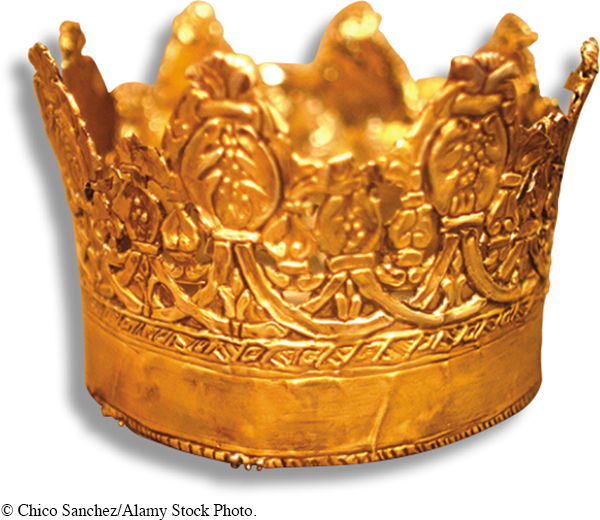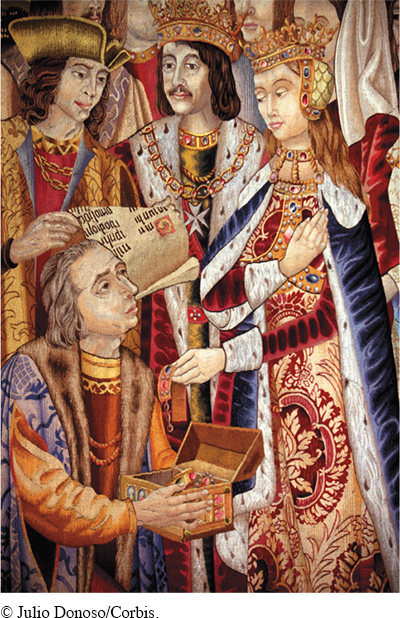Introduction to Chapter 2
25
2
Europeans Encounter the New World
1492–

CONTENT LEARNING OBJECTIVES
After reading and studying this chapter, you should be able to:
Recognize the demographic shifts and technological innovations of the fifteenth century that allowed Europeans to explore regions outside their own continent.
Follow the Columbian exchange, including its costs and benefits to Europeans and Indians.
Understand how Spain created its empire in the Caribbean and in Central and South America, including the costs of Spanish conquest and colonization.
Explain how Spain’s New World colonies affected its political ambitions in Europe.
TWO BABIES WERE BORN IN SOUTHERN EUROPE IN 1451, separated by about seven hundred miles and a chasm of social, economic, and political power. The baby girl, Isabella, was born in a king’s castle in what is now Spain. The baby boy, Christopher, was born in the humble dwelling of a weaver near Genoa in what is now Italy. Forty-
Isabella was named for her mother, the wife of the king of Castile, whose monarchy encompassed the large central region of present-
Queen Isabella and King Ferdinand battled to unite the monarchies of Spain under their rule, to complete the long campaign known as the Reconquest to eliminate Muslim strongholds on the Iberian Peninsula, and to purify Christianity. In their intense efforts to defend Christianity, persecute Jews, and defeat Muslims, Isabella and Ferdinand traveled throughout their realm, meeting local notables, hearing appeals and complaints, and impressing all with their regal splendor.
26

Tagging along in the royal cavalcade of advisers, servants, and hangers-
Columbus hurriedly organized his expedition, and just before sunrise on August 3, 1492, three ships under his command caught the tide out of a harbor in southern Spain and sailed west. Barely two months later, in the predawn moonlight of October 12, 1492, he glimpsed an island on the western horizon. At daybreak, Columbus rowed ashore, and as the curious islanders crowded around, he claimed possession of the land for Isabella and Ferdinand.
Columbus’s encounters with Isabella and those islanders in 1492 transformed the history of the world and unexpectedly made Spain the most important European power in the Western Hemisphere for more than a century. Long before 1492, other Europeans had restlessly expanded the limits of the world known to them, and their efforts helped make possible Columbus’s voyage. But without Isabella’s sponsorship, it is doubtful that Columbus could have made his voyage. With her support and his own unflagging determination, Columbus blazed a watery trail to a world that neither he nor anyone else in Europe knew existed. As Isabella, Ferdinand, and subsequent Spanish monarchs sought to reap the rewards of what they considered their emerging empire in the West, they created a distinctively Spanish colonial society that conquered and killed Native Americans, built new institutions, and extracted great wealth that enriched the Spanish monarchy and made Spain the envy of other Europeans.
CHRONOLOGY
| 1480 |
|
| 1488 |
|
| 1492 |
|
| 1493 |
|
| 1494 |
|
| 1497 |
|
| 1498 |
|
| 1513 |
|
| 1517 |
|
| 1519 |
|
| 1520 |
|
| 1521 |
|
| 1532 |
|
| 1535 |
|
| 1539 |
|
| 1540 |
|
| 1542 |
|
| 1549 |
|
| 1565 |
|
| 1576 |
|
| 1587 |
|
| 1598 |
|
| 1599 |
|